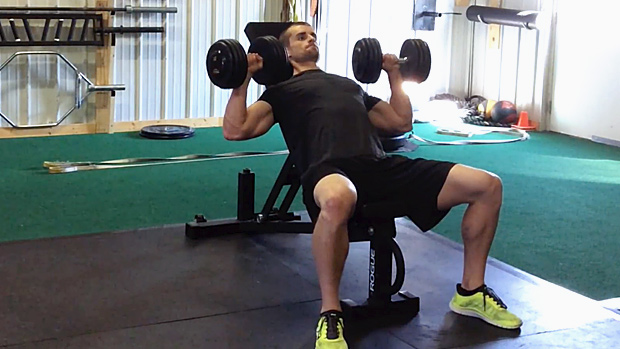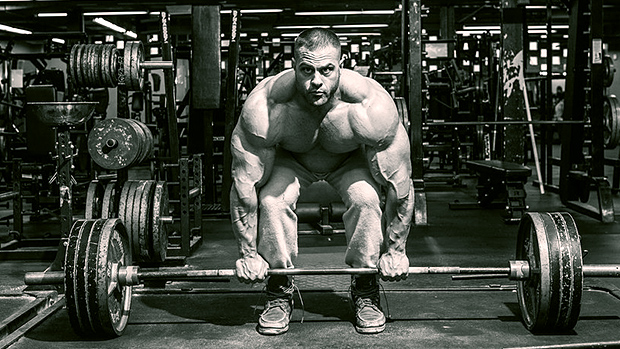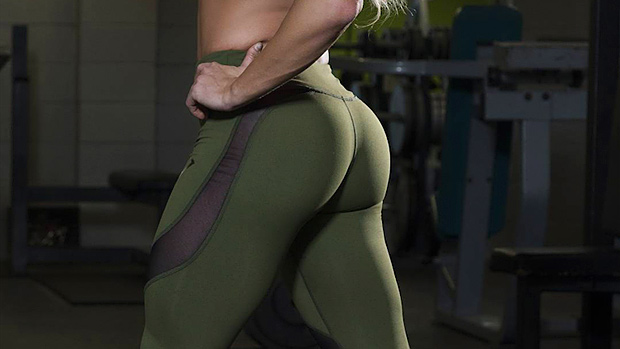Over the past decade, you've been brainwashed into thinking that a few stretches here and there will steal your hard-earned gains, decrease performance, and maybe even cause injury. Let's set things straight.
Fact: Stretching is not a means of mechanical tissue change.
Let's be clear here, functional muscle length is dependent on neurological tone, not mechanical alteration in tissue. There's little, if any, mechanical change in soft tissues through the practice of stretching or foam rolling. There's no physical breakdown of fascia, no realigning of sarcomeres, no bands of scar tissue being addressed, and absolutely no muscles becoming "longer" from stretching.
Don't believe it? A few years back I administered a few case studies in the cadaver lab of my alma mater, targeting fully dissected cadavers with a heavy movement based manual soft tissue technique. Even with two hands working the tissues directly and a partner passively moving the extremities to gain full range of motion and end range muscular tension, I couldn't physically or mechanically alter the tissue under my fingertips.
However, even though muscles can't lengthen or shorten, the form and function of these structures can be highly influenced by the active and passive tone of the muscle. The tone can be thought of as the relative tightness of a muscle, along with the tension that each muscle holds.
Fact: Not all types of stretching are the same. Static and dynamic stretching are unique. The length of the hold matters too.
"Stretching" is a very general term, especially when being used to correct position or movement. Saying that all types of stretching works the same is like saying all lifting is the same and provides the same benefits or risks. Both statements are untrue.
Let's address static vs. dynamic stretching and how they're both unique in their own ways.
- Static stretching: Involves achieving a near end-range position on a tissue and the joints the tissue interacts with. The stretch is held for an extended duration without any movement or change in position.
- Dynamic stretching: Involves the use of varying degrees of movement while targeting a tissue or movement without the use of an extended hold.
Static stretching has been crucified in recent years, especially when used directly before training and competition, but it's important to differentiate between long-duration holds and short-duration static holds.
Much of the research looks at static stretching's effects on power performance, joint positioning, and injury rates when holding a stretch for a few minutes at a time. In my experience as a coach and trainer, I've seen no performance reduction in strength, power, or speed from the practice of ultra-short duration (5-15 seconds) static stretching in my athletes. Neither have I seen any notable soft tissue injuries secondary to this practice.
This is the reason both coaches and athletes may want to think twice before jumping to conclusions on static stretching before competition and training and forget the fear of performance reduction.
What does this mean for the average lifter and athlete looking to optimize performance? Don't be afraid to stretch for a few seconds pre-training, but make damn sure that your positions are solid gold, and you get purely dynamic later on in your warm up routine before getting under the bar.

Fact: Stretching before training may enhance performance, if done correctly.
Here's where your mind is about to be blown. I've touched upon the idea of long-duration stretching decreasing the effects of contractile tissues to produce rapid force by dulling the stretch reflex. However, this practice just isn't going to happen in the gym or before competition, as it's painstakingly brutal and boring.
Secondly, even if athletes, for whatever reason, were holding long-duration static stretches and feeling ill effects from the practice, the so-called targeted stretch was targeting anything but the muscles.
After assessing the stretching and soft tissue programs of thousands of athletes, it's safe to say that 80% of these athletes are falling deep into heavy joint-crushing compensation patterns, placing the effects of a stretch on the non-contractile tissues such as ligaments, tendino-osteo junctions, joint capsules and of course, the joints themselves.
A shitty stretch executed with poor positioning can absolutely have ill effects on performance, especially dynamic movements and actions. The body perceives a threat when placed into this position for an extended period of time and reacts by increasing the tone of the local musculature. This locks down the joints that were being targeted. This poorly aligned stretching practice also has the ability to cause chronic injuries as well.
The three most dysfunctional areas on lifetime lifters are the:
- Pectoralis group
- Latissimus muscles
- Hip flexors
The inability to position your shoulder into a centrated and packed position due to mobility restrictions in the internal rotators such as the pecs or lats can actually deter from the amount of load you're able to move in a pain free manner as well.
As for the hip flexors, where do we even start? Having tight superficial and deep hip flexors before going into a big squat, a hip hinge, or carrying movement is a recipe for disaster. So again, what's more important to you and your iron performance? Achieving better joint positions from less tonic soft tissues, or buying into the flawed view that "static" stretching done as a warm-up results in performance reduction?
Doing some dynamic stretches, followed by a round or two of short duration static stretches before you get into the rest of your movement based dynamic warm-up, makes your body perform better.
Fact: Pre-workout stretching will not increase risk of injury.
Many believe that stretching before workouts will actually predispose an athlete to injury. Before we move forward, it's important to understand that athletes have been stretching for hundreds of years. Up until a decade or so ago, stretching was actually recommended as a way to stay injury-free during sport. And guess what? A lot of pro and elite level athletes continue to stretch against the recommendations of their strength coaches and trainers.
Taking the current injury epidemic into account, and comparing our current rates of injury from thirty or so years ago, it doesn't take a doctor to see that our current system as a whole is far inferior to what it used to be in terms of injury prevention. Athletes from the youth sector all the way up to pros are dropping left and right. Just watch Sports Center once in a while.
There are three main components that have changed from the 1970's to our current day:
- The popularization of early sport specialization
- The postural epidemic caused by handheld technologies
- A largely sedentary population.
And yes, you might add the demonization of stretching in the athletic population.
So is stretching the savior of all things injury related? Not quite, but placing this practice back into the toolbox of many movement professionals and trainers is a good start in finding new ways to remediate the problems facing our fit society. Stretching isn't just one thing, it's a continuum of positions and movements, so placing this back into play doesn't make us all yogis; it makes us well-rounded athletes and coaches.
When programmed intelligently, stretching can play some sort of role in the dynamic warm-up and movement remediation programming of athletes to get better function and performance. Just don't go crazy with it, and for God's sake, practice some decent technique and form!

Fact: Stretching can expedite the recovery process.
Stretching can play a roll in mediating localized inflammation and promoting active recovery and tissue healing when done on recovery days or in recovery-focused workouts after the primary training is over. When executed with control and precision, stretching causes tissues surrounding a joint – or in control of a movement pattern – to both contract and relax, especially if you're utilizing dynamic based stretching with oscillation.
These contractions cause the stimulation of the active mechanical muscle pump, which essentially places pressure on the local vasculature of an area of the body to help streamline the excess fluid back up into the abdominal viscera and back into general circulation, or on the fast track to excretion. This active muscle pump can be enhanced by manipulating extremity positions, such as having your legs or arms positioned above your heart level, or with the use of compression techniques or garments that will help expedite the mechanical drainage of fluid and maintain the level of local inflammation.
While soft tissue and stretching-based recovery can aid in inflammation control, it can also direct local blood flow to active tissues to bring nutrients directly to that targeted area, thus speeding up the recovery process as well.





